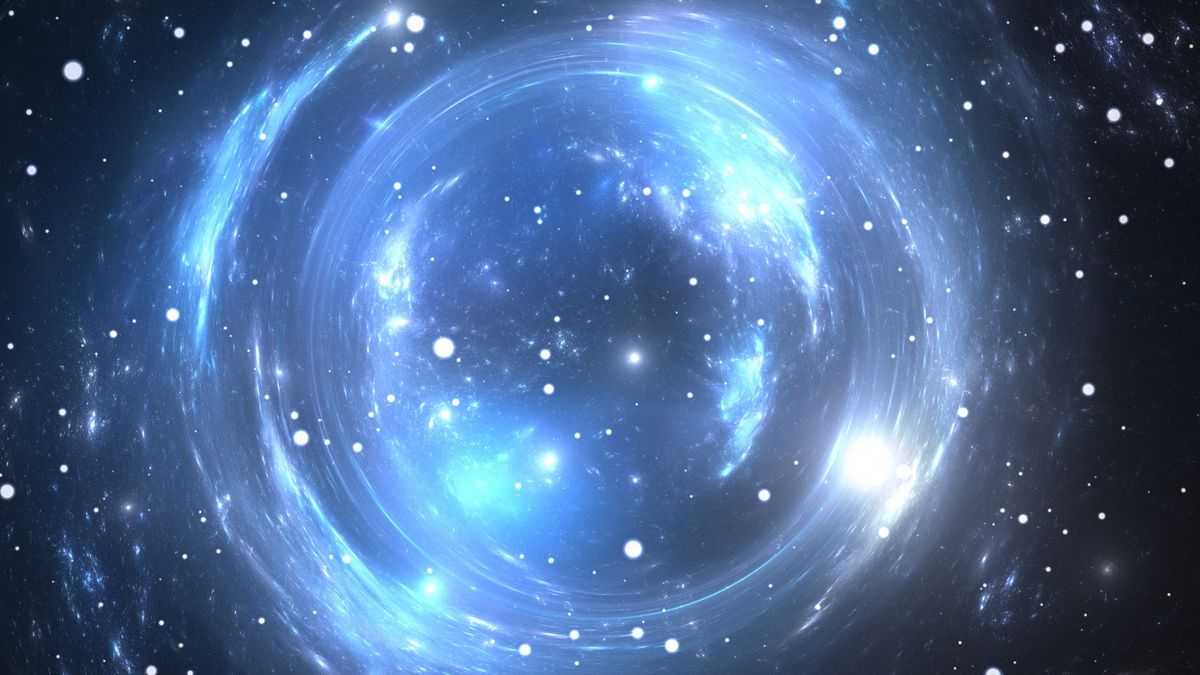'Cosmic magnifying glass' reveals super-rare warped supernova with gravitational lens.
'Cosmic magnifying glass' reveals super-rare warped supernova with gravitational lens. (Thanks, Einstein!)
By Keith Cooper published about 12 hours ago
The discovery is the tip of the iceberg for gravitationally lensed supernovas that could help us better understand the expansion of the universe.

a deep view of stars in space, some of which are being warped in a circle-like pattern
Artist's illustration of gravitational lensing. (Image credit: Pitris/Getty Images)
The gravity of a distant galaxy warped space and magnified the light of a faraway supernova, potentially revealing tantalizing details about stellar explosions, as well as an unseen population of galaxies and the expansion of the universe.
The galaxy appears very faint to us and not particularly large, but its mass — a combination of its stars, gas and its invisible halo of dark matter — warps space into a gravitational lens, a sort of cosmic magnifying glass. As the light from the supernova passed by the galaxy, the lens magnified the light by as much as 25 times, and split the supernova into four images as the light took four different paths following the contours of the warped space.
The discovery is being called "exceptionally rare," and some of the scientists involved were surprised by it. That's because only a handful of gravitationally lensed supernovas have ever been discovered. "I was observing that night and was absolutely stunned when I saw the lensed image of SN Zwicky," said Caltech's Christoffer Fremling in a statement.
The supernova was a type Ia, meaning it was the destruction of a white dwarf star. It exploded over four billion light-years away and as its light journeyed towards us it encountered a galaxy in our line of sight, 2.5 billion light years away.
More:
https://www.space.com/supernova-gravitational-lens-sn-zwicky?utm_source=notification
